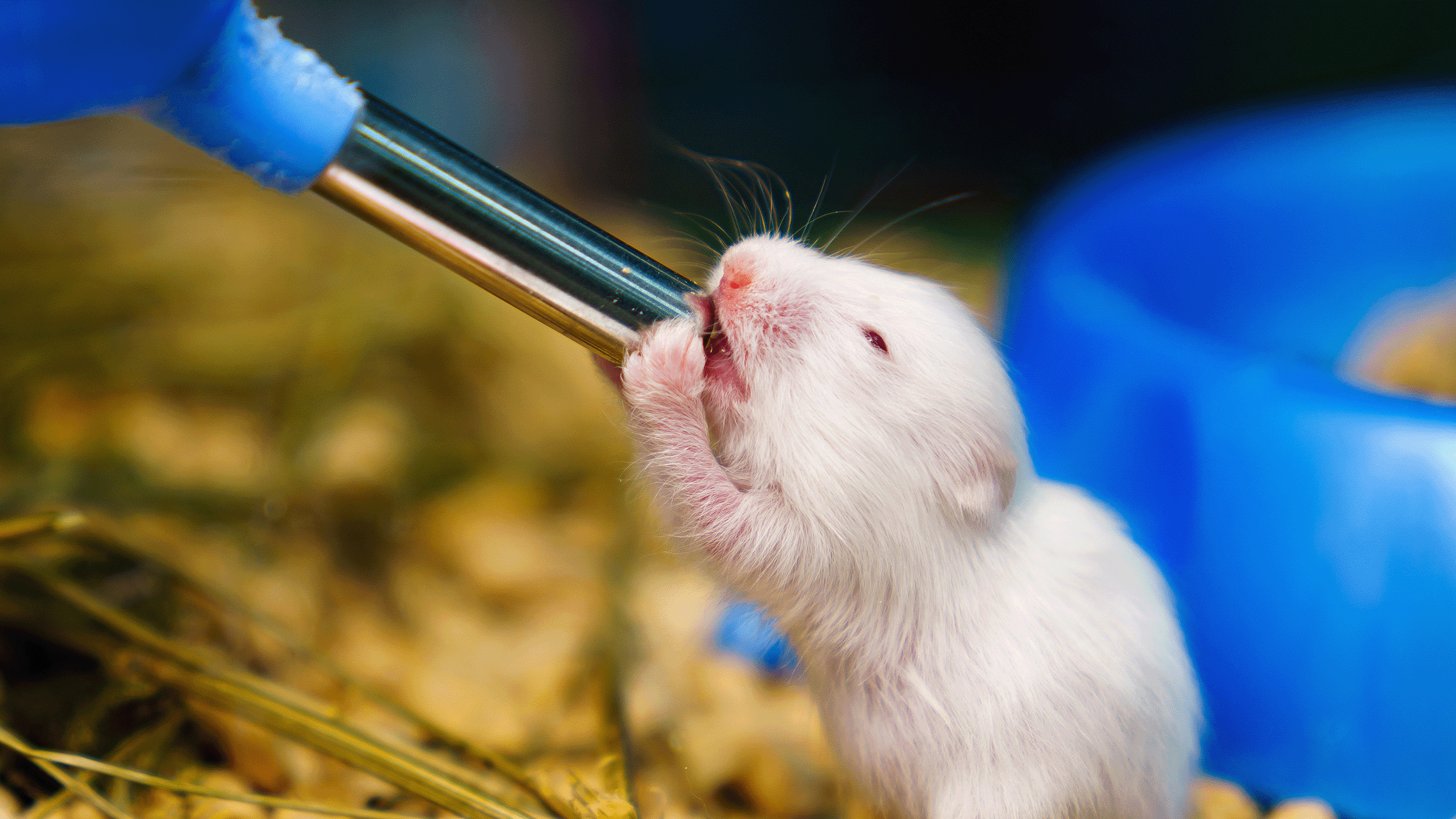
Animal Drinking Water
Drinking Water Supply and Quality Information
Source, Treatment and Purification
Tap water from the DeKalb municipal system is used as the source of animal drinking water. DeKalb County obtains drinking water for treatment from the Chattahoochee River. Almost without exception, this water is treated by sand and charcoal filtration, reverse osmosis and UV sterilization prior to point of animal consumption in DAR facilities. The exceptions are that animals housed in the Rollins Building receive tap water that has been acidified to pH 3.5 and those in the Peavine Kennel receive plain DeKalb County municipal tap water.
Means of Provision
Water is provided to animals by the following means: bottles with capillary holes - rodents; bottles with sipper tubes - rodents, songbirds, rabbits; cage manifolds with drinking valves - rabbits, rats, mice, dogs, pigs, sheep; pans/buckets/bowls- dogs, cats, birds, sheep, pigs.
Reserve Capacity
Six facilities have reservoir tanks with storage capacity ranging from 100-500 gallons, but there are also deployable 275 gallon emergency water totes stored in a warehouse and used in cases of emergency.
Quality Control
Water is collected for each facility from all devices (e.g., storage tanks, bottle fillers) used to fill animal drinking containers or from automated water distribution systems (e.g. manifold, drain valve, lixit) and is sent to an independent testing lab every 3 months for microbiologic cultures and tests. Additionally, the consumer confidence reports from the DeKalb County Public Works Department are obtained yearly, reviewed by the responsible faculty veterinarian, and kept on file in the diagnostic lab.
Water valve lixits are manually wiped as a routine husbandry procedure with a cold sterilant solution of stabilized 1% peracetic acid, 1% hydrogen peroxide and 5% acetic acid (Actril®) which is biodegradable, leaves no toxic residue, and decomposes into water, oxygen and acetic acid.
Racks with automated watering are removed from service twice yearly and are washed and flushed in a mechanical washer using a pasteurizing rinse temperature.
Four times annually, the drinking water distribution systems are decontaminated and biofilm formation is prevented by treatment with one or a combination of the following agents, 1N HCl, 5% sodium hypochlorite, and/or 1% peracetic acid, and then flushing of the system.
Medicated Water
The provision of medicated or fortified water for research purposes, including frequency of fresh preparation and replenishment, must be specifically approved by the IACUC. Water containing medications or test article for research purposes is considered to be a research variable and the preparation and provision of this water, unless by special arrangement, is considered to be the responsibility of research units (i.e., laboratories). Please see the facility supervisor or manager for assistance in meeting cage identification; rack, room and contact information; water storage; and record-keeping requirements. Clinically-ill animals may be prescribed medicated water at the discretion of the DAR veterinary staff in which case ordinarily this would be considered to be a responsibility of the DAR.
Water Restriction
Controlled or limited access to drinking water requires IACUC approval. Please see the facility supervisor or manager to ensure meeting specific requirements for cage identification, contact information, and record-keeping.
A Note Regarding the Choice of Drinking Water Supply for Mice
The advantages of automated delivery of drinking water are continual water purity (i.e., bottles quickly become fouled with oral flora), slight increase in the housing capacity of the mouse rooms owing to denser footprint, less frequent disruption of animals for animal care purposes, and substantial animal care cost savings. The pumps operating the system are on the back-up power circuit and the flow of water through the system is monitored by the building automation system with alarms for cessation of flow.
The disadvantage of the automated watering system is a higher rate of drinking water supply failures resulting in a higher combined fatality rate from either dehydration or the effects of flooding as compared to bottles. The DAR tracks adverse events related to drinking water supply closely and regularly. These findings are reported to the IACUC for full quorum review quarterly.
The housing of mice on the automated watering racks is elective and at the choice of the laboratory and should be done in light of a cost-benefit consideration and scientific requirements. Investigators may choose between either bottles or automated means for the supply of drinking water to mice and are not required by DAR to choose one over the other except in the cases of sterile housing, chemical containment, and biohazard cages where bottles remain the only option.
Retrospective analysis shows that losses from dehydration on the automated watering system can be reduced by the proper labeling of cages of vulnerable mice, careful monitoring of those mice by both research and animal resources personnel, manual testing of water flow at the lixit, and providing a water bottle or gel pack as a moisture supplement for naive mice adapting to the technology.